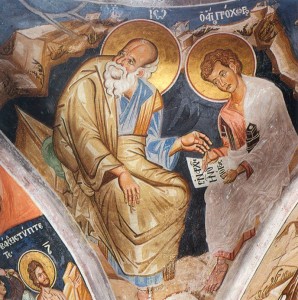Hesychasm and Theology: A Contribution to the Dialogue concerning the Great and Holy Synod
30 May 2016On the occasion of the convocation of the Holy and Great Synod of the Orthodox Church, we are publishing a text by George Mantzaridis, Emeritus Professor of Theology at the Aristotle University of Thessaloniki, which deals with the manner in which Orthodox Theology is produced. This text is a contribution to the more general dialogue which is preceding the discussions of the Pan-Orthodox Synod.
Hesychasm is not merely a theological school or ecclesiastical system, but rather a phenomenon which transcends the various schools and systems. It is even more true that hesychasm is not restricted to a particular period in the history of monasticism, such as that of the fourteenth century, when the erudite monk, Barlaam the Calabrian, attacked the Athonite monks and provoked the well-known hesychast dispute. Hesychasm is the cultivation of the tranquillity which is the enduring characteristic of Orthodox monasticism. But what is this tranquillity and of what does it consist?
In the usual sense, ‘hesychia’ (tranquillity) is equated with lack of movement, as opposed to motion; or is considered as being identifiable with rest, in contradistinction to work or occupation. In other words, tranquillity is understood as an external and, in the main, a corporeal state, without any particular spiritual content or any direct connection with people’s inner life. It coincides with what the Fathers call ‘argia’ (inaction).

But in the Orthodox tradition, tranquillity has a very different meaning. It does not equate to immobility, nor with rest. Nor is it treated as some sort of conventional diversion or virtue. Tranquillity is the ‘most sublime insouciance’ [1] and ‘the most perfect virtue’ [2]. It is the path of knowledge of God, which culminates in ‘the vision of God’. The other virtues, which ‘are accomplished through work- by observing the commandments- are the first stage, and are a required condition if we are to continue our progress towards the ‘vision of God’.
Saint Symeon the New Theologian, the great hesychast saint, puts it succinctly when he says: ‘None of the apostles or the God-bearing Fathers promote tranquillity above pleasing works, but in observing the commandments they knowingly show the faith of the love of God’ [3].
Never in the life of the Church has tranquillity been considered preferable to the observance of the commandments. Wilful non-compliance to the commandments is the very opposite of tranquillity. Because of their love for God, hesychasts faithfully observe His commandments and are thus enabled to become acquainted with Him. It is their desire to remain with Him that allows them to pass through the stage of turmoil and anxiety and to embrace the ‘divine fire’ of tranquillity, so that ‘they can hear the tranquillity of Christ’ [4]. This is why the model of tranquillity and of the hesychast life in Orthodox hesychasm is Our Most Holy Lady, who bears ‘the divine Fire’ in her arms [5].
Through the observance of the commandments, we show our love of God and approach knowledge of Him. ‘They who have my commandments and keep them, are those who love me. And they who love me will be loved by my Father, and I will love them and manifest myself to them’ [6]. But the state of prayer of the heart transcends the observance of the commandments. Whereas the observance of the commandments, which is more generally called ‘action’ in the ascetic tradition, leads to ‘contemplation’ tranquillity of the mind is the locus where divine contemplation takes place.
Naturally, before people reach the level of tranquillity of the mind, they have to try to concentrate their intellect, to free it from concerns and remove it from worldly cares. In this way, avoidance of the things of this world is promoted as a way of ascetic cleansing and a process of elevation towards tranquillity of the mind. This is why Saint John the Sinaïte, the master of hesychasm, places renunciation as the first rung of the Ladder, his manual of hesychasm. He says that no-one will enter the heavenly bridal-chamber with a crown unless they perform the triple renunciation: of things and other people; of the severance of the personal will; and of the rejection of vainglory [7].
(To be continued)
[1] See Gregory the Theologian, Λόγος εις εαυτόν 26,7, PG 35,1237B.
[2] See Symeon the New Theologian, Ηθικά 15,1, ed. J. Darrouzès, Syméon le Nouveau Théologien, Traités Théologiques et Éthiques, Sources Chrétiennes, vol. 129, Paris 1967, p. 444.
[3] ibid. pp. 454-6.
[4] Ignatios of Antioch Προς Εφεσίους 15, 2.
[5] Dismissal Hymn of Our Lady the Consolation.
[6] Jn. 14, 21.
[7] John the Sinaïte, Ladder 2,14, PG 88, 657Α.






